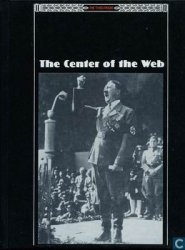The system of fortification created by Edward I in North Wales crystallized the most modern developments of military architecture, and marked the culmination of castle building in the British Isles and Western Europe. The Edwardian castles bear witness to the new ideas on fortification that had been introduced during the 13 th century. They form a substantial testimony to the determination of a great king, and to the architectural skills of a great designer. They also mark the transition from the austere fortresses of the Norman-Angevin age to the castle-palaces of the later Middle Ages. Edward’s castles, however, soon fell into disrepair. Once the pacification of Wales was achieved, they were redundant, and became only costly burdens to garrison and maintain. Some of them (e. g., Caernavon and Beaumaris) were never totally completed. Already in the 14th century, with the exception of those which were royal residences, the ruinous castles had started to decay. Builth Castle in the Welsh county of Powys, for example, rebuilt in the late 1270s by order of Edward I, has totally disappeared. Stones from the castle were taken to construct new buildings in the nearby town. All that is left of Builth Castle are ruins, earthworks and the mound of the original former Norman motte-and-bailey castle. Some Edwardian castles provided useful strongholds during the Wars of the Roses, but it may be said that by the 14th century the great era of castellar construction in Britain had come to a gradual close.
Edward I died in 1307, and was succeeded by his son Edward II, who reigned from 1307 to 1327. The military triumph and remarkable castles of Edward I had been bought, however, at a heavy cost in taxes, and a new generation of baronial opposition had begun to make itself felt. Besides, Edward II lacked the military success of his forebear, and when victory in war was replaced by defeat (notably Bannockburn in 1314), discontent rose. Edward II’s reign was marked by civil war and political confusion caused by his frivolous, lazy and extravagant behavior, as well as his favoring of personal friends (Piers Gaveston and Hugh Despencer), which alienated the barons. Edward II failed in the marriage department too, and his rule came to a grisly end when his wife, Isabella (the sister of Charles IV, king of France) and her lover, Roger Mortimer of Wigmore, had him deposed and viciously murdered in Berkeley Castle in 1327. Next in line was Edward III, and the simmering stew of dispute between England and France came to the boil.




 World History
World History









